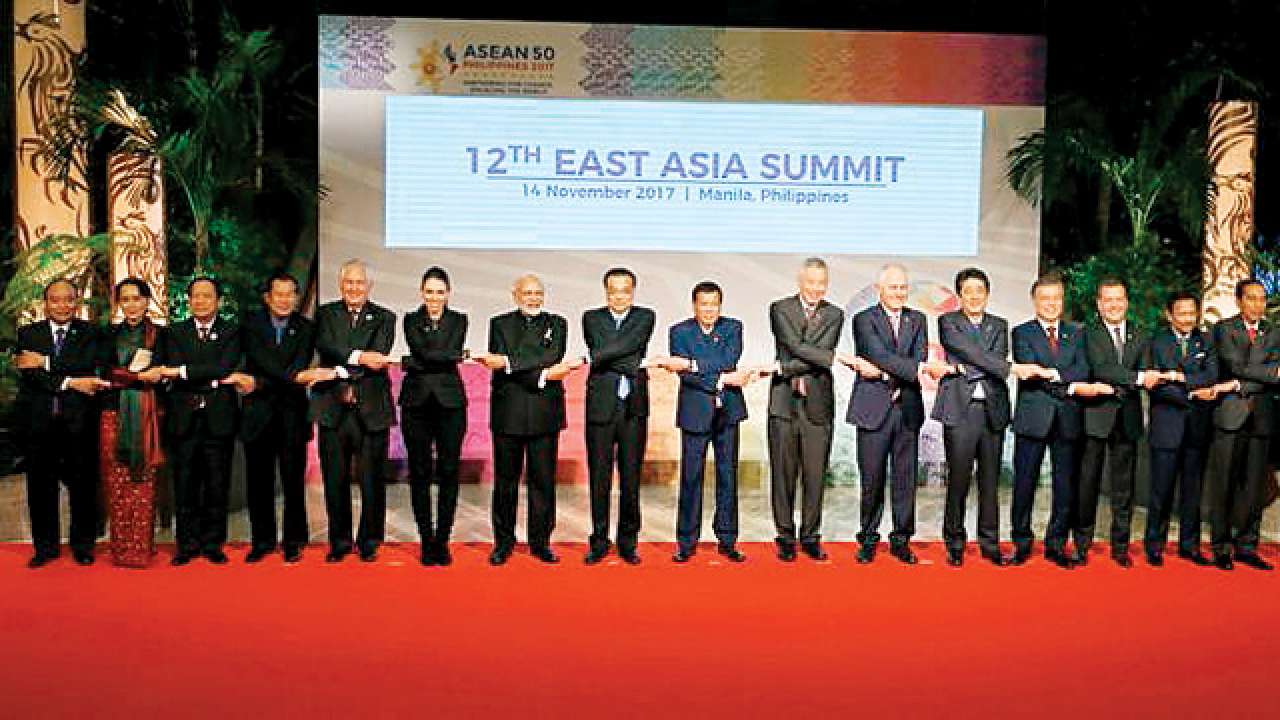
The attempt to revive the strategic quadrilateral comprising the US, Japan, Australia and India on the sidelines of the ASEAN Summit in Manila is, clearly, the triumph of hope over experience. In this same city, the idea was first mooted in 2007 and then allowed to die a slow death over the years.
Even if none of the four players are superstitious about the proposed quad — as the four-nation coalition is called — failing again only because the venue is Manila, ground realities preclude its success. It is just that none of the four, least of all India, wanted to play Cassandra and scuttle the first rites, which was a meeting of officials. In fact, the meeting was kept to the level of officials — and not any higher, as had been suggested — because India is not keen to commit itself to the quad even at the foreign secretary level.
At the same time, New Delhi going along superficially with the proposal at this juncture has the limited advantage of ambiguity to keep Beijing guessing. After all, the quad’s main objective is to contain, if not confront, China.
The quad is not a good idea. There is nothing in it for India and, hence, no reason for India to be seen waving the flag as a part of this coalition and its posturing against China. In dealing with Beijing, New Delhi would like to stick to its mantra of not allowing “differences to become disputes.” Thus, in stressing that the Act East policy would be the cornerstone of India’s engagement in the Indo-Pacific, New Delhi’s message is that the quad is of no immediate importance; and, India’s concurrence at this stage is more a deference to form than a commitment to the coalition’s objectives.
The quad embraced the term “Indo-Pacific” and all but dropped “Asia-Pacific” at its first official-level meeting on November 12. The stated aim of the quad is to focus on keeping the region “free and open” — in other words, counter China’s aggressive acts and increasing military presence in the area. For the record, officials were one in their view that “a free, open, prosperous and inclusive Indo-Pacific region serves the long-term interests of all countries in the region and of the world at large.”
There was no joint statement after the four-nation coalition’s meeting; and, Indian officials were at pains to emphasise that the grouping was not aimed at any “particular country,” meaning China. Each of the four countries released separate statements mentioning its priorities and omitting what did not serve its purpose.
A careful reading of the statements shows that the four are not on the same page on many issues. India and Japan did not use the term “quadrilateral” which the US and Australia did. While the other three named North Korea in their statements, India’s only referred to “proliferation linkages”. India’s statement was silent on “freedom of navigation and overflight,” “respect for international law” and “maritime security” (in the South China Sea); while these figured prominently in the statements of the other three.
Obviously, New Delhi does not want to be locked into a geostrategic bind with the US, Japan and Australia. Prime Minister Narendra Modi himself has not said anything explicitly to promote the quad after the meeting of officials on November 12. Nor did Modi consider it necessary to talk about the quad after his meetings with Japanese Prime Minister Shinzo Abe, Australian Prime Minister Malcolm Turnbull and US President Donald Trump.
There are many reasons — apart from what is evident in India’s statement — why India is not keen to push ahead with the quad. First and foremost, India has nothing to gain by taking a prominent role in a coalition to challenge China. Second, Japan’s Shinzo Abe — who had floated the quad idea in 2007 — shares India’s stance of being sensitive to China’s concerns; and, Beijing has already reacted adversely to the four-nation coalition. Third, Australia — which, at the behest of China, aborted the 2007 effort for a quad — may well get cold feet again. The volume of Australia-China trade is $135 billion and that’s a lot of money at stake for Canberra to antagonise Beijing. Japan’s trade is around $300 billion, second only to that of the US ($500) billion. Fourth, India already has a strong strategic partnership with the US, Japan and Australia, and not much more can be secured by another geostrategic partnership with the same countries.
Last, while the US is keen to drive the quad, it is China’s most important global partner. The US and China see themselves as “Asian Powers”, and what the US wants from China are advantageous terms of trade for Trump’s “America First” policy. For businessman Trump, the quad means another business opportunity — of selling more military hardware in the region for boosting jobs at home.
Given this context, South Block was right to remain cool — and, at the same time, diplomatically correct — in its nuanced response to the quad initiative.
India’s success on this outing of Modi is basking in the rising use of the term “Indo-Pacific” in place of Asia-Pacific; for Indo-Pacific, in South Block’s view captures the importance of India’s rise. And, Indo-Pacific was very much the season’s flavour in Manila.
The author is an independent political and foreign affairs commentator. Views expressed are personal.